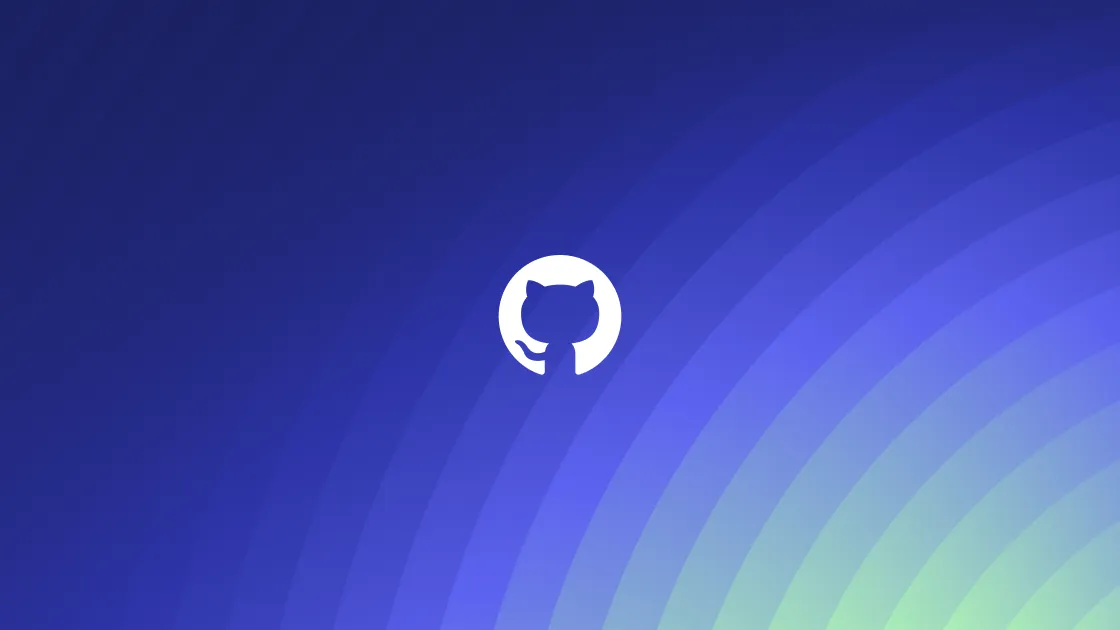GitHub is more than just a code hosting platform—it’s a productivity powerhouse that can streamline your workflows, enhance collaboration, and automate repetitive tasks. If you’re not tapping into GitHub’s full potential, you’re leaving productivity on the table. Here’s how to make the most of GitHub to enhance your development workflow.
GitHub Templates: Accelerate Issue and PR Management:
Consistency in issue tracking and pull request (PR) submissions is key for efficiency. GitHub’s issue and PR templates let you predefine structures for these activities, ensuring contributors provide all necessary details upfront.
To create a repository template, simply initialize a repository as you would normally, add your files and configurations, and then go to the repository’s Settings > Template repository and check the box “This is a template repository”.
When creating a new repository, you’ll have the option to use your repository template, which automatically creates a new repo with the same structure, files, and configurations.
Example Use Case:
Imagine you’re working in a team that frequently builds backend services. Instead of manually setting up every new service from scratch, you can create a backend service template with all the necessary files: .gitignore, Dockerfile, README.md, and basic configuration files. Every time you need to create a new service, just choose this template, and you’ll have a standardized repo ready to go.Benefits of GitHub Templates.
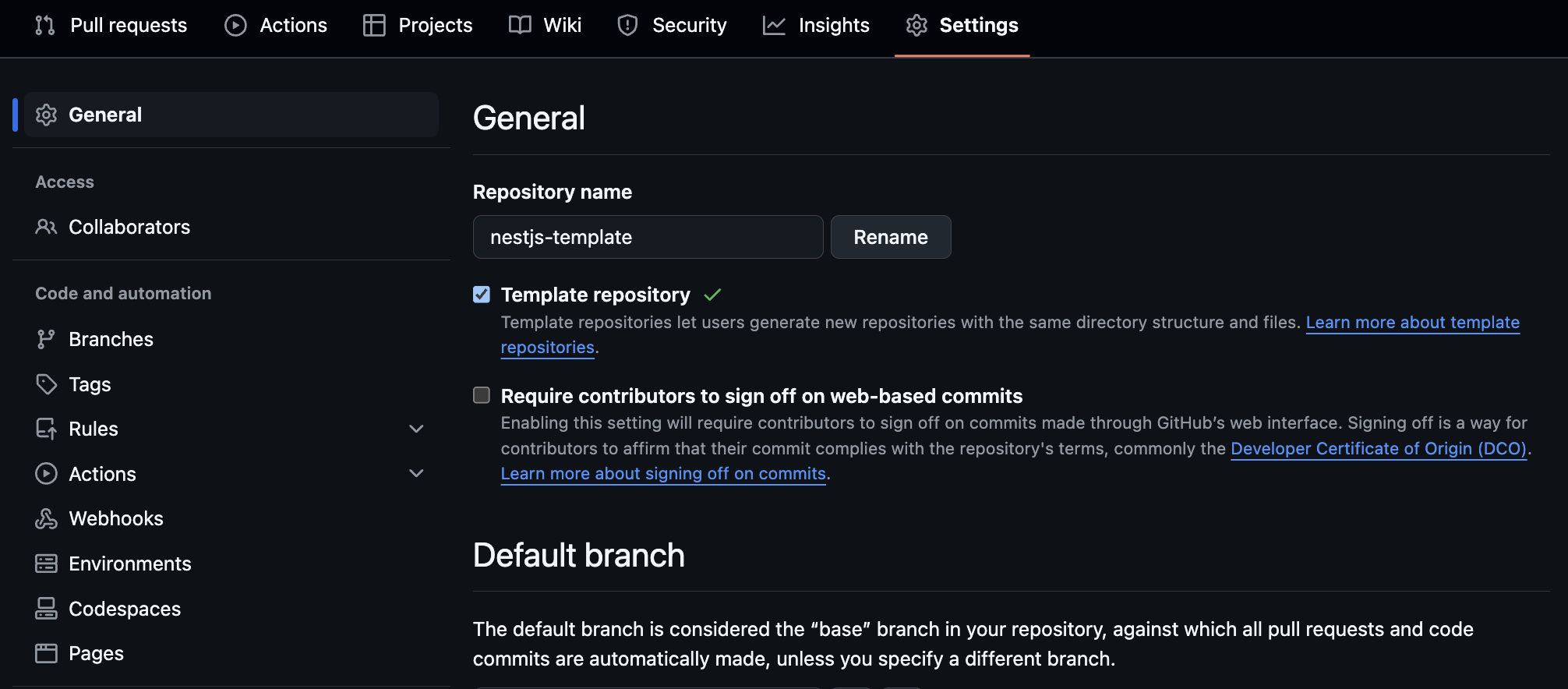
Benefits:
- Consistency: Ensures a standard structure for issues, PRs, and repositories.
- Speed: Quickly create repositories or submit issues/PRs without manual setup.
- Collaboration: Sets clear guidelines for contributors, reducing misunderstandings.
- Automation: Streamlines workflows by using checklists and predefined templates.
GitHub Labels: Simplify Issue Tracking:
GitHub Labels help you manage and categorize issues and pull requests (PRs), making it easier to prioritize, filter, and track tasks. The powerful part of labels is their ability to be automatically assigned through GitHub Actions workflows, which can save time and reduce manual work.
How to Automate Labeling with GitHub Actions
You can use GitHub Actions to automatically label PRs based on specific criteria, such as the type of changes or files modified. For instance, you can create a workflow that automatically labels a PR as bug or enhancement based on the content of the PR.
Benefits:
- Speed: Automatically categorize PRs, so you don’t need to manually add labels.
- Consistency: By automating label application, you ensure consistency across PRs and issues.
- Preview: Developers and maintainers get immediate insights into the PR (e.g., bug, enhancement, critical) without opening it.
This is especially useful for large teams with frequent PR submissions, allowing anyone to easily filter and sort PRs by their type or priority.
Here’s an example of an action workflow that automatically labels PRs:
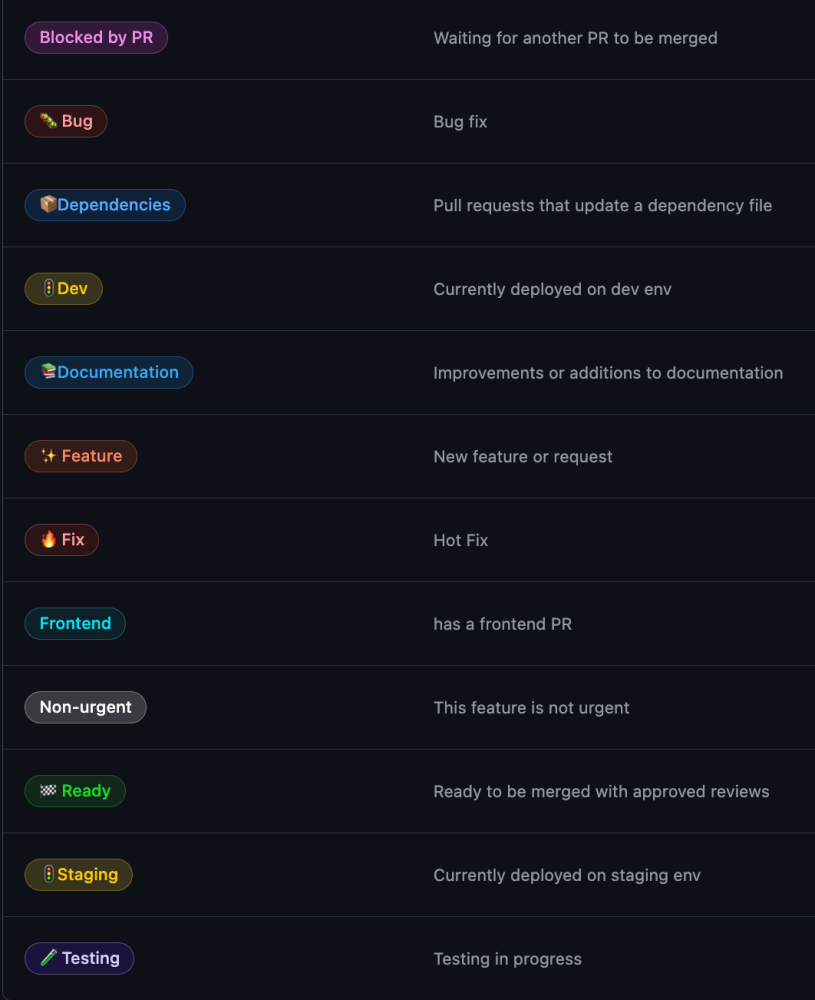
GitHub CODEOWNERS: Automate Code Reviews:
The CODEOWNERS file in GitHub helps automate the process of assigning specific code reviewers based on the file or directory being changed. This allows teams to maintain high-quality code by ensuring that the right people review the relevant parts of the code.
How It Works:
- Every time a pull request modifies files in the
/frontend/folder, the@frontend-teamwill automatically be requested to review the PR. - If the PR includes changes to files in
/config/*, the@devops-teamwill be requested to review those changes.
Benefits:
- Automated Review Assignment: No need to manually assign reviewers—GitHub automatically requests the right reviewers based on the modified files.
- Ensures Expertise: Specific owners can be assigned to areas of code where they have the most expertise, improving the quality of code reviews.
- Enforces Accountability: You ensure that the right team members are reviewing the right changes, maintaining code quality and accountability.
Here’s an example of a CODEOWNERS file that assigns different code owners based on path:
|
|
GitHub Actions: Workflows to Automate Everything:
GitHub Workflows, powered by GitHub Actions, allow you to automate various tasks within your repositories, such as testing, deployments, and other routine processes. With workflows, you can define custom automation pipelines, improving efficiency, consistency, and collaboration.
What Are GitHub Workflows?
Workflows are YAML files that define actions to be executed automatically on specific events (e.g., pull request creation, pushing code). These workflows can be set to run on multiple events like push, pull_request, schedule, and more.
Key Benefits of GitHub Workflows:
- Automation of Routine Tasks: Automate repetitive processes like running tests, building code, deploying to production, or sending notifications. This reduces manual effort and errors.
- Consistency and Reliability: Workflows ensure processes are repeatable and standardized, reducing environment-related inconsistencies and ensuring reliable deployments.
- Faster Development Cycle: Automate tasks such as testing and deployment, allowing developers to focus on writing code while workflows handle repetitive actions, speeding up the CI/CD process.
- Improved Collaboration: Standardizing processes like tests and deployments ensures smooth collaboration between teams, as everyone follows the same workflow.
- Flexibility and Customization: Workflows can be tailored for specific tasks such as deployment to different environments (e.g., staging, production), security audits, or interactions with tools like Slack and Jira.
Practical Use Cases:
- Continuous Integration (CI): Automate tests and code quality checks each time code is pushed, ensuring that new changes don’t break existing functionality.
- Continuous Deployment (CD): Automate the deployment process to staging or production environments, streamlining the release cycle.
- Automate Repetitive Tasks: Set up workflows for tasks like updating dependencies, generating reports, or performing security audits.
- Team Notifications: Use workflows to notify teams of build statuses or deployment results via platforms like Slack or Jira.
- Deploy to Multiple Environments: Customize workflows to deploy code first to a staging environment, run tests, and then push to production only after successful tests.
Here’s an example of a GitHub Actions workflow for CI/CD:
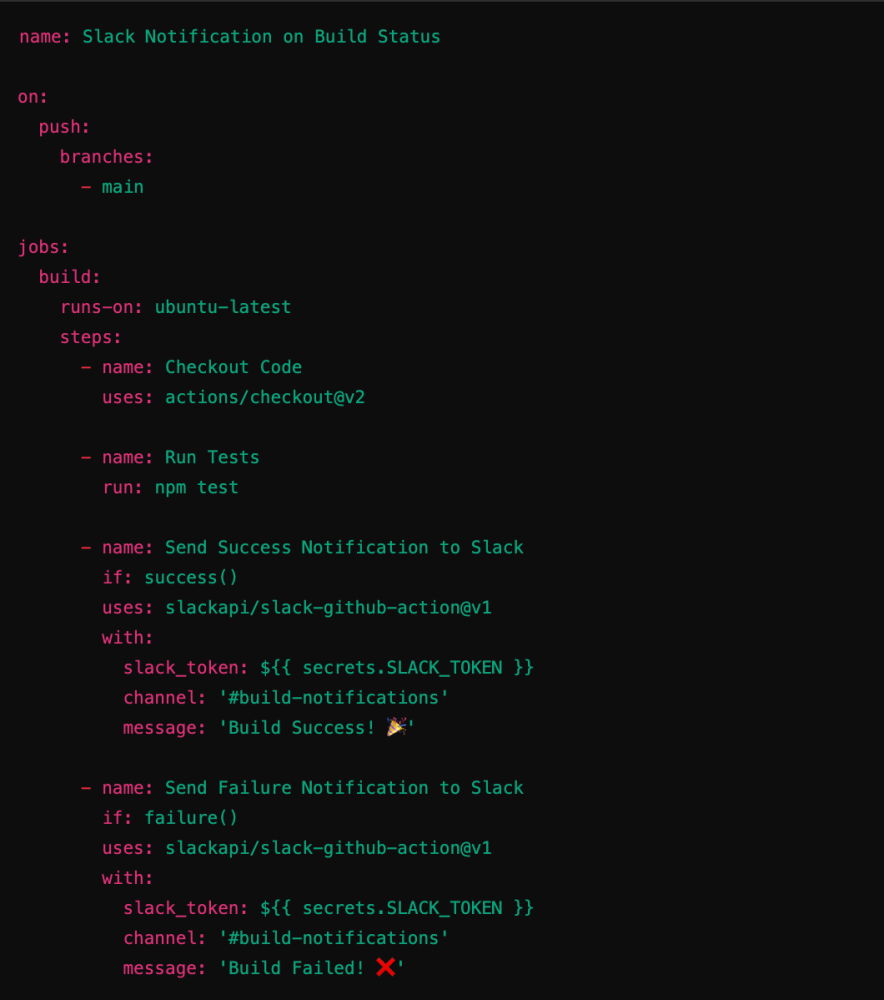
GitHub Secrets and Environments: Manage Credentials Securely:
GitHub Secrets are a great way to manage sensitive information like API keys, database credentials, and deployment tokens securely within your repository. GitHub provides encrypted secrets storage, making it a safer and more manageable solution compared to storing secrets in plain environment files or external services.
Managing Multiple Environments with GitHub Secrets:
GitHub allows you to define secrets in the repository’s settings, which can be used in your workflows or environment configurations. You can also create Environments (such as staging and production) to manage different configurations for each stage.
How to Add Secrets:
- Go to your GitHub repository.
- Under your repository name, click Settings.
- In the left sidebar, click Secrets and then New repository secret.
- Add the secret’s name (e.g.,
API_KEY) and value (e.g.,your-api-key-here).
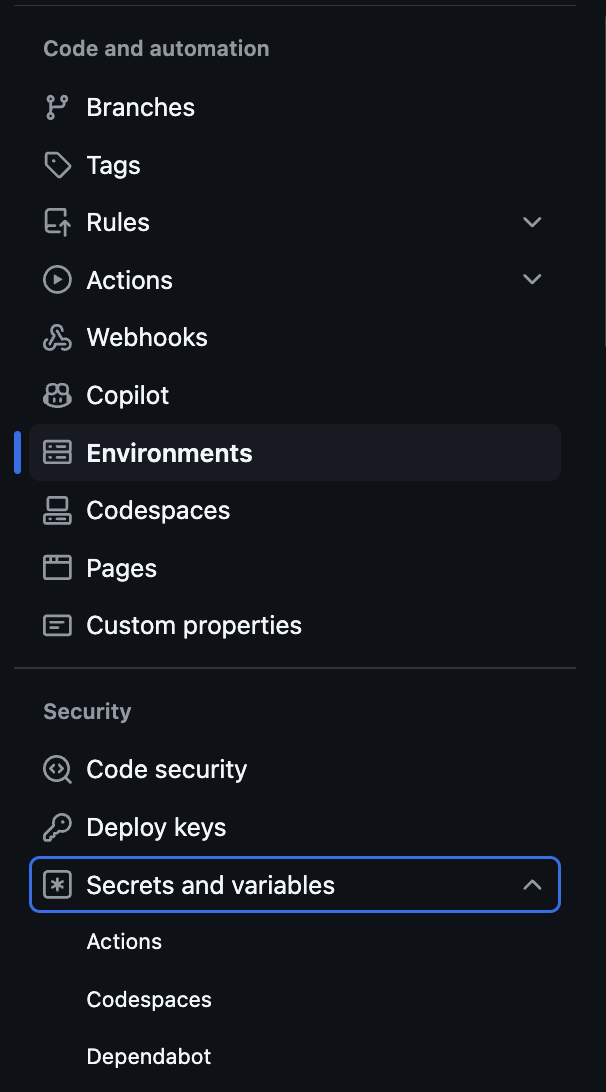
Benefits:
- Security: Secrets are encrypted and are only accessible by workflows that you explicitly grant permission to.
- Environment Management: You can define different secrets for each environment (e.g., production and staging), making it easier to manage different configurations.
- Ease of Use: Unlike external secret management services like AWS Secrets Manager, you don’t need to set up external integrations or maintain additional services. Everything is integrated into GitHub and can be securely accessed in workflows.
GitHub Teams and Project Access: Optimize Collaboration:
GitHub Teams allow you to organize contributors into groups like frontend, backend, or devops, simplifying permissions management. You can assign different access levels (read, write, admin) to each team, ensuring only the necessary people can modify repositories.
By using GitHub Projects, you can manage tasks and milestones for each team, ensuring smooth collaboration across roles. For example, the frontend team gets access to frontend-related repositories, while devops focuses on deployment tasks.
Benefits:
- Simplifies permissions: Manage access at the team level, not individually.
- Enhances collaboration: Clear roles make communication easier.
- Improves security: Control who can access and modify repositories.
- Streamlines workflow: Use projects to track tasks and milestones across teams.
GitHub Dependabot and Apps: Automate Dependency Management:
GitHub Dependabot is a tool that automatically keeps your dependencies up-to-date, helping to manage security risks and ensure your projects use the latest stable versions of libraries and frameworks.
Beyond dependency updates, GitHub integrates with other useful bots and apps to streamline your workflows and keep your team informed about important events, such as build statuses or new issues.
Examples of Useful Bots with GitHub Actions::
- Slack Notifications on Build Status: You can set up a GitHub Action to send notifications to a Slack channel when a build succeeds or fails.
- JIRA Integration: You can use a GitHub Action to automatically create or update JIRA issues based on PR events or commit messages. This is useful for linking development work directly to project management.
- SonarCloud Integration: GitHub Actions can integrate with SonarCloud to analyze your code for quality issues.
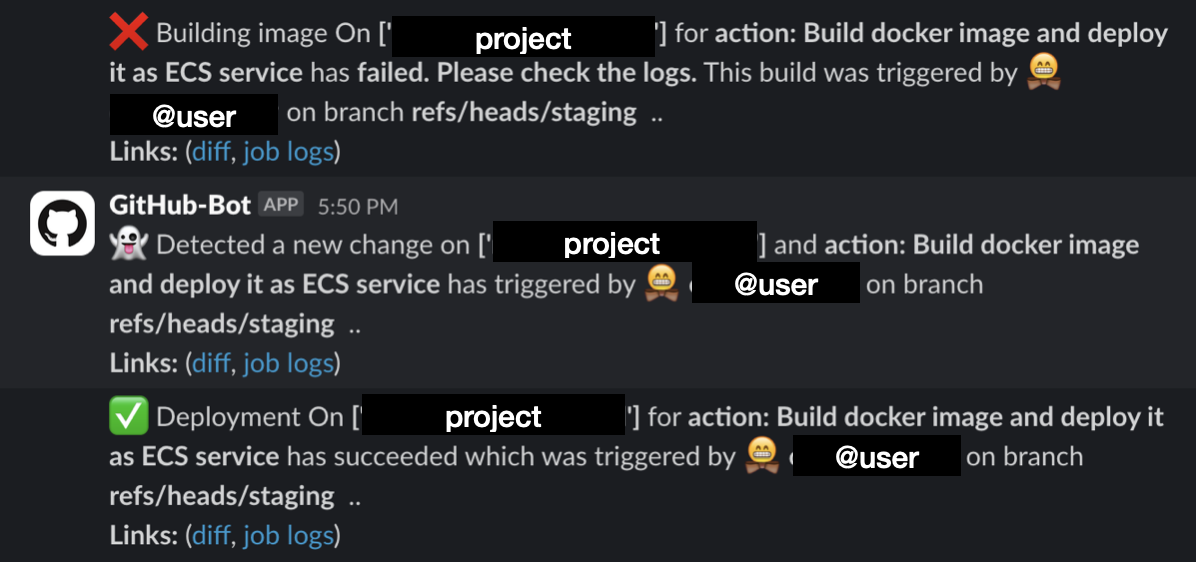
Benefits of GitHub Bots and Apps::
- Real-Time Updates: Receive immediate notifications on Slack, Teams, or other channels about important project events.
- Automation: Automate tedious tasks like creating JIRA issues or scanning code for quality issues, reducing manual effort and preventing human errors.
- Integrated Workflows: Integrate seamlessly with project management and CI/CD tools, enabling a more cohesive development environment.
GitHub Insights: Make Data-Driven Decisions:
GitHub Insights provides analytics and metrics to help you track project progress and team performance. You can analyze contributions, issue resolution times, pull request reviews, and more. This data helps you identify bottlenecks in your workflow and measure key performance indicators (KPIs) like code quality and release cadence.
Benefits:
- Measure Progress: Track key metrics like pull requests opened, closed, and review time.
- Identify Bottlenecks: Use data to optimize workflows and improve team efficiency.
- Data-Driven Decisions: Make decisions based on actionable insights into project performance.
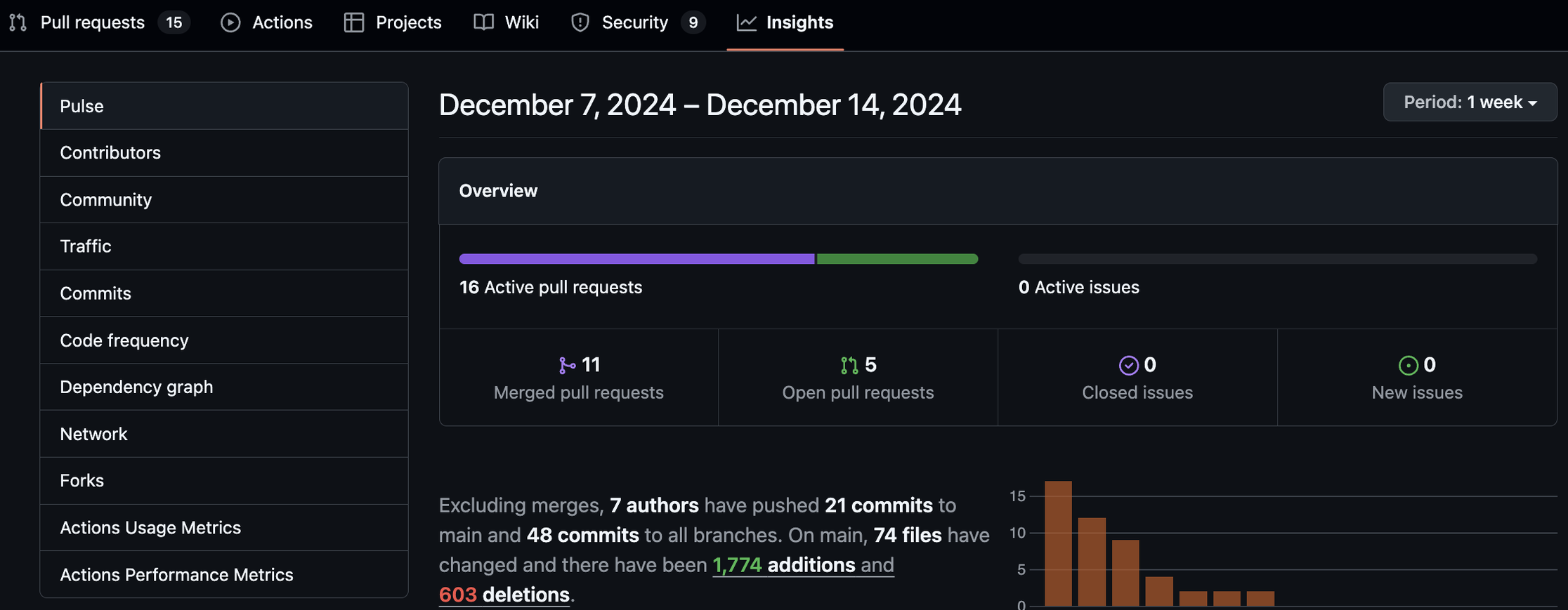
Conclusion
By leveraging GitHub’s robust ecosystem of features, you can transform your workflow, reduce manual tasks, and focus on what matters most: building great software. Whether it’s automating deployments with GitHub Actions, securing secrets, or streamlining code reviews with CODEOWNERS, there’s a tool to make your life easier. Start implementing these features today and watch your productivity grow!
Further Reading
By mastering GitHub, you’ll not only streamline your workflows but also unlock the full potential of collaboration and innovation in your projects.
